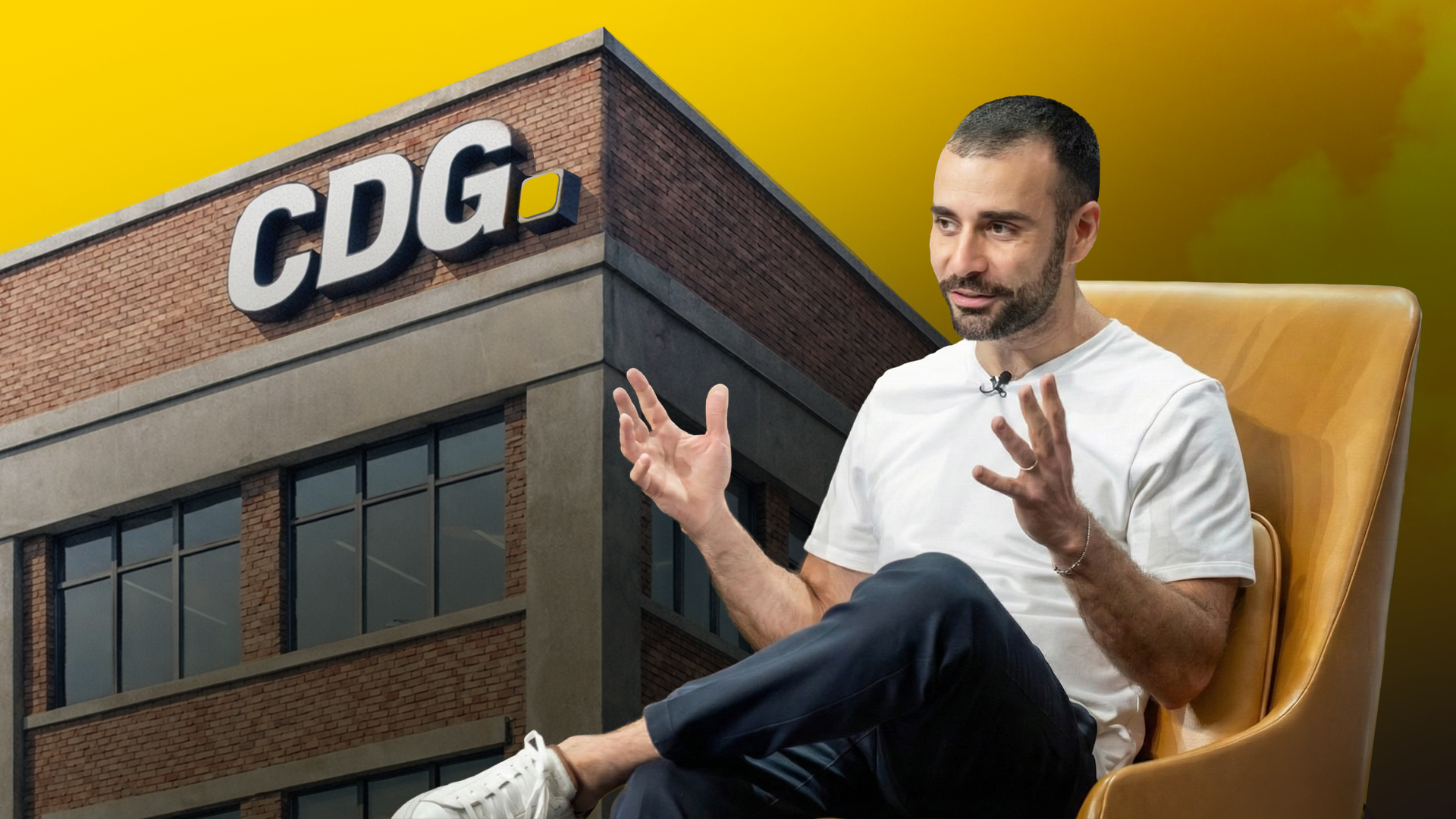
Welcome to another episode of the Car Dealership Guy Market Update—Brought to you by Edmunds.
This podcast segment is a monthly recurring discussion with automotive industry experts and dealers about the current state of the car market and where it might be headed in the future. Today, Jessica Caldwell, head of insights at Edmunds, breaks down the hard data and provides a macroeconomic perspective on the market. Find out what the data has to say about second-quarter sales, OEM inventory strategies, margin compression, and where the auto industry goes from here.

1. Q2 sales performance.
When comparing the second quarter to Q2 2023, sales performance was relatively flat, says Jessica. This is surprising given the rise of new vehicle inventory and the recovery of incentives. Many analysts expected to see sales rise year-over-year, but the results were muted. While the CDK Global outages did disrupt sales, they happened at the very tail-end of the quarter creating a lesser impact from a total volume perspective, explains Jessica. “From a sales standpoint, we did see softness in June. The June SAAR (the number of cars the industry is on pace to sell this year) was about 15.3 – a little bit on the lower side of what we have been tracking,” she says. The bigger question becomes: can OEMs and dealers maintain profitability as volume climbs?
2. Inventory rebound.
After Q2, new car inventory was just shy of 3 million units. For context, before the pandemic, inventory consistently sat somewhere between 3 and 4 million vehicles in any given month. But Jessica says this was too much inventory for dealers. “It feels like we’re in a healthy place,” says Jessica. “Although that’s not true for every automaker.” Toyota, for example, is probably wishing they had more hybrids to sell, while Jeep and its parent company Stellantis have far too much supply. From Jessica’s perspective, inventory doesn’t necessarily need to grow anymore given where sales are at today. Historically, an abundance of supply and steep incentives have put pressure on the whole system. But OEM Q2 earnings reports will undoubtedly drive production decisions. If margin profitability is good, then there isn’t a big need to turn up the volume up on inventory.
3. Affordability and demand.
Growth in Incentives has started to slow and new car prices are holding steady. The average new vehicle still costs around $48,000 and incentive spending in June was 6.4% of the average transaction price ($3,102), down 6.7% from May, but up from 4.2% ($2,036) a year ago per Cox Automotive. Jessica attributes this to a mismatch in demand. “I feel like there are a lot of desirable vehicles and then there are some undesirable vehicles where incentives are naturally going to be higher.”
4. OEM winners and losers.
Nissan and Stellantis are struggling with year-over-year declines in Q2, says Jessica. On the other hand, Toyota and Honda had strong performances. While the majority of brands saw a pretty decent lift over Q1, results are still a mixed bag and OEMs are seriously rethinking their product lineups. Nissan for example, has already discontinued the Maxima. The Versa will follow suit in 2025 and there’s talk of saying goodbye to the Altima in 2026. Why? Jessica says it’s likely to make way for new EVs. “It feels like maybe some of these nameplates will come back but perhaps not as internal combustion vehicles, but possibly EVs,” she says.

Edmunds - Premier is a solution from Edmunds that connects you with in-market shoppers when, where, and how they want to connect. New customers get half off for 90 days when you sign up at edmu.in/4cPPFje.
Car Dealership Guy News - The #1 source for concise and unbiased car industry news. Stay informed with the most relevant and interesting stories by visiting cdg.news.
5. A masterclass in brand loyalty.
Toyota stands out with an uptick of 12% market share year-over-year in Q2 – by far the largest gain. But the automaker is still lacking inventory (especially hybrids) compared to other brands. The Prius only sold 13 units in the month of June. Toyota recalled the Prius for faulty rear doors and halted sales to find a fix in April. Production resumed in Japan in June, with new units expected to arrive in the U.S. in late July and August. “I do think Prius is one of those vehicles that consumers will wait for,” says Jessica. “On the flip-side, RAV4 sales were around 40,000. It looks like one of the Detroit brand pickups at that volume.”
6. More headwinds for Stellantis.
The Dodge, Chrysler, Jeep, Ram parent saw a 20.9% decline year-over-year in market share for Q2. In addition to pricing and vehicle selection struggles, the brand has seen several of its top executives resign over the past two months, including its head of software business and product management and chief customer experience officer. “Every time I read the news, it seems like another top executive is gone. I’m seeing more about that than the actual product and that’s concerning,” Jessica comments. “Even though things don’t look great at this time, the likelihood of bouncing back is probably pretty high for them.”
7. Market share by segment.
Subcompact and compact cars have drastically declined since pre-COVID, with subcompact cars now making up under 1% of the market, says Jessica. While models like the Civic and Corolla still perform well, the compact segment has shrunk overall. Smaller SUVs are growing in popularity, though affordability issues persist, especially for larger SUVs and midsize vehicles. Trucks saw a market share spike during the low interest rate period, but this has now reversed. Current truck market share is still higher than pre-COVID but considerably lower than recent peaks. Overall, consumers are increasingly favoring small SUVs.
8. The health of the consumer.
The consumer is financially stretched and costs are rising, explains Jessica. High interest rates, averaging over 7% for new vehicles are leading to record-high monthly payments exceeding $700. In regions with lower living costs, these car payments rival rent or mortgage expenses. Used car buyers face even higher APRs (annual percentage rates), over 11%. High interest rates are forcing consumers to be more strategic about their financing, resulting in more pre-approvals. Additionally, nearly 18% of consumers are taking on car payments over $1,000 a month, reaching 17.8% in Q2 2024, just shy of the record 17.9% in Q4 2023. This trend persists despite stable new car prices and rising incentives. It shows consumers are still drawn to expensive vehicles but incomes are not rising enough to match costs.
9. Persistently high negative equity.
A few years ago, limited car production made used car values and trade-ins very high. This made negative equity a non-issue, as people profited greatly from their vehicles. Yet, as the market normalizes, negative equity is rising again, now averaging over $6,000. This record-high amount leads to high monthly payments and shows that many are trading in new vehicles. Adjusting for inflation, the negative equity amount likely remains a record, driven partly by high car prices. EVs are contributing meaningfully to this trend, as price cuts have led to record levels of negative equity. Interestingly, the price gap between mainstream EVs and gas-powered cars has nearly closed, down from an $8,400 difference in May 2023 to only $1 now.
10. Outlook for the rest of the year.
Reflecting on the past month with the hurricane and CDK issues, it's clear there has been a lot of stress and challenges. Over the next three months, things look relatively stable, but the upcoming election could bring some big changes, especially in the EV sector. Right now, about 70% of EVs are sold on leases thanks to tax credits, and a new administration might shake things up. Automakers have poured a lot of money into EV technology, so any changes in rebates could really throw a wrench in the works. The market's heavy reliance on these incentives means policy shifts could have immediate and significant impacts on sales and consumer choices. While the short-term outlook seems calm, the bigger picture is full of uncertainties, especially with the potential political changes in 2024.
Become an automotive insider in just 5 minutes.
Get the weekly email that delivers transparent insights into the car market.
Join 70,000 others now, it's free:
Interested in advertising with Car Dealership Guy? Drop us a line here.
Want to be considered as a guest on the podcast? Add your name here.








